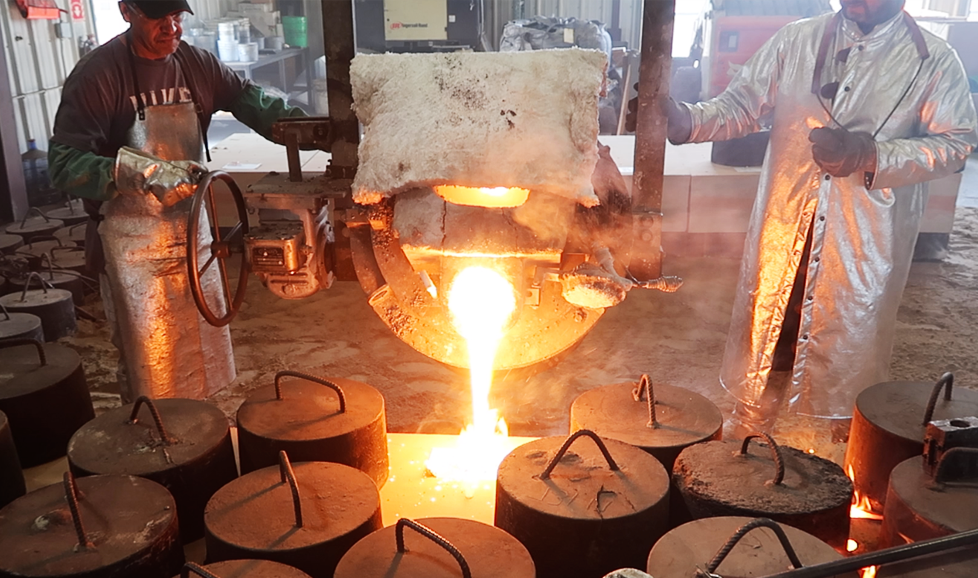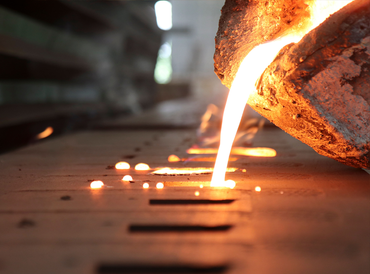A Deep Dive into How a Metal Foundry Functions
Wiki Article
Recognizing Metal Casting Procedures: Innovations and Patterns in the Foundry Sector
The foundry market is experiencing significant changes driven by technological advancements. Technologies such as 3D printing and expert system are reshaping steel casting procedures, improving performance and precision. Sustainable techniques are obtaining grip, emphasizing the value of environmental duty. In addition, the introduction of advanced materials and automation is enhancing total casting high quality. These advancements recommend a critical change in the sector, increasing questions regarding future instructions and ramifications for makers.Improvements in 3D Printing for Metal Casting
Current developments in 3D printing modern technology have considerably changed the landscape of steel casting. The combination of additive production techniques has allowed the quick manufacturing of facility patterns and molds that were previously challenging or difficult to accomplish with typical approaches. By utilizing products such as sand and metal powders, manufacturers can develop elaborate geometries that improve design adaptability and decrease material waste. This development not just expedites the prototyping procedure however additionally enables the personalization of parts tailored to certain applications.
Furthermore, 3D printing facilitates shorter lead times, which is crucial in markets requiring quick turn-around for parts. The technology also sustains the production of lightweight structures, therefore enhancing power effectiveness in final product. Because of this, the foundry market is observing a change in the direction of even more sustainable methods, driven by the performance and precision supplied by these contemporary 3D printing techniques in metal casting processes.
The Function of Artificial Knowledge in Precision Production
As sectors increasingly take on innovative production technologies, expert system (AI) is playing a critical duty in improving precision production processes. AI formulas examine huge datasets to determine patterns and enhance manufacturing parameters, leading to boosted precision and performance. In metal casting, AI aids in predictive upkeep, reducing downtime by projecting equipment failures before they occur.AI-driven simulations allow makers to design the casting process, refining layouts and reducing problems. Device learning techniques enhance quality assurance by identifying abnormalities in real-time, therefore making certain that only items meeting strict specs proceed via the manufacturing line.

Lasting Practices in the Foundry Industry
Sustainability has actually arised as an important focus in the foundry sector, triggering suppliers to adopt techniques that decrease environmental effect while preserving performance - Aluminum Casting. One popular method includes the recycling of materials, specifically steels, which considerably reduces waste and power intake. Shops are significantly carrying out closed-loop systems, permitting the reuse of sand and other casting materials, thereby reducing the need for virgin resourcesFurthermore, energy-efficient innovations, such as electrical furnaces, are gaining traction, as they reduced greenhouse gas discharges compared to conventional methods. Lots of factories are exploring the use of green finishes and eco-friendly binders to minimize poisonous results. Worker training on lasting techniques has actually additionally ended up being necessary, promoting a society of environmental obligation within companies. Overall, these lasting methods not just add to environmental conservation but additionally boost the long-lasting feasibility of the foundry sector in a significantly eco-conscious market.
Developments in Materials for Improved Casting Top Quality
With the constant advancement of the foundry market, developments in materials have actually come to be vital for enhancing casting high quality. Advanced alloys and composite materials are significantly being used to enhance mechanical residential or commercial properties and minimize defects in castings. These products often offer superior strength-to-weight ratios and enhanced resistance to corrosion and wear, dealing with the demands of modern-day applications.In addition, the incorporation of nanomaterials is obtaining grip, enabling finer microstructures that result in improved surface area coatings and dimensional accuracy. Aluminum Casting. 3D printing technologies additionally contribute in generating intricate geometries with minimal waste, enabling making use of specific materials that were formerly testing to cast
The growth of environmentally friendly binders and additives contributes to lasting techniques while maintaining top quality results. Collectively, these advancements not just improve the performance of actors products but also line up with the sector's change in the direction of sustainability and efficiency.
Automation and Robotics in Metal Casting Procedures
Automation and robotics are transforming steel casting procedures by improving procedures and improving precision. In contemporary shops, robotic systems are employed for jobs such as mold and mildew handling, pouring, and ending up, significantly minimizing human treatment. This not just decreases the threat of crashes but also assures consistent quality in manufacturing.Automation modern technologies, such as computer system mathematical control (CNC) equipments, assist in intricate styles and intricate geometries that were previously challenging to accomplish. Real-time information analytics enable makers to maximize and keep an eye on procedures performance continually.
Keep track of The integration of automation leads to raised performance and effectiveness, allowing shops to meet growing market needs while minimizing lead times. As the industry welcomes these developments, the workforce is additionally progressing, needing brand-new skills to run and keep innovative equipment. Overall, the adoption of automation and robotics is a critical pattern forming the future of steel casting processes.
Often Asked Inquiries
What Is the Background of Metal Casting Techniques?
Metal casting methods go back to old civilizations, with proof of bronze casting in Mesopotamia around 3000 BCE. Over centuries, approaches advanced considerably, including advancements in materials and innovation, shaping modern commercial practices.How Does Metal Casting Effect the Environment?
Metal casting substantially impacts the setting through energy intake, exhausts, and waste generation. Nevertheless, improvements in lasting methods and technologies intend to reduce these effects, advertising even more eco friendly approaches within the market.What Precaution Are Crucial in Factories?

What Are Usual Issues in Metal Casting Products?
Common flaws in metal casting items consist of porosity, shrinkage, misruns, cool shuts, and surface area imperfections. These concerns emerge from aspects such as inappropriate temperature control, insufficient mold and mildew layout, and contamination throughout the casting procedure.Exactly How Do Foundries Make Sure Quality Control in Casting Processes?
Foundries carry out rigorous quality control actions through regular examinations, standardized screening, process monitoring, and adherence to market requirements. These methods more info assist determine problems early, ensuring the honesty and dependability of the final casting items.Innovations such as 3D printing and man-made knowledge are reshaping steel casting procedures, enhancing performance and precision. Current improvements in 3D printing technology have actually significantly changed the landscape of steel casting. Automation and robotics are revolutionizing steel casting processes by boosting and streamlining procedures precision. Metal casting methods day back to old people, with proof of bronze casting in Mesopotamia around 3000 BCE. Common flaws in steel casting products include porosity, shrinking, misruns, cool shuts, and surface imperfections.
Report this wiki page